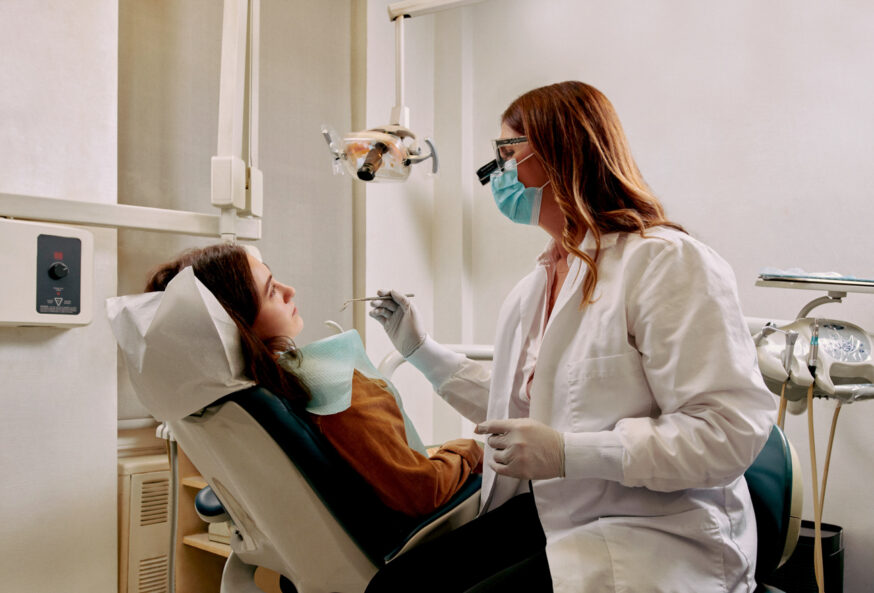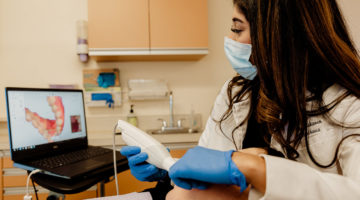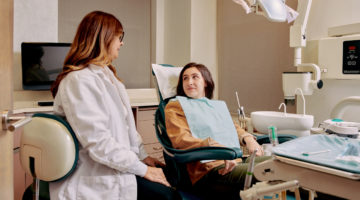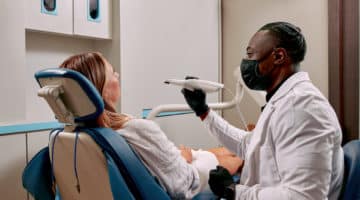Chairside time is a critical metric for every practice looking to increase profitability, and the more time dentists spend per patient means losing potential revenue from additional patients. While every patient must get quality care and case success, owners must optimize their practice efficiency in delivering successful outcomes at scale.
There are several tactics dentists can use to reduce their time in the chair while increasing patient outcomes and quality of dental care. Some techniques are more managerial than clinical, including using certified dental auxiliaries in their dental office, where applicable, creating a backup scheduling plan in case of patient no-shows, and treatment planning based on visit contingency. While these techniques offer some benefits to chairside rotation, they often depend on external factors. A more reliable model for decreasing chairside consists of controllable factors and innovation within the operatory.
Decrease Impression Time
Restorative and cosmetic cases are a critical revenue driver for every flourishing dental practice. Unfortunately, both cases require a considerably more significant amount of chairside time than general and preventative dental cases. The workflow requires a patient visit to make an accurate impression. Each impression involves the preparation of an impression tray, the impression material, and the setting of the material after fitting it in a patient’s mouth. All-in-all, traditional dental impressions take an average of 18 minutes to perform and can cost approximately $117 when a clinician’s time and material cost is considered at the current market rate. If all goes well, the procedure can be completed within the average period. If remakes are needed, the process must be repeated and may lead to another patient visit. This unnecessary cycle leads to extended chairside time at a high cost and poor patient care .
One foolproof way to decrease impression time is by using a digital intraoral scanner to perform the impression. The scanning process only takes approximately 1:30 to complete and no prep or material set time is needed. The intraoral technique uses advanced imaging technology with state-of-the-art chairside software to capture the patient’s bite in real time with intricate detail. The digital impression workflow improves the patient experience. It can aid in cutting down on chairside time as patient anxiety is better managed, and the “gagging effect,” often produced by inserting impression putty into the patient’s mouth through a traditional workflow, is no longer an issue ensuring the patient’s comfort.
Use Retained Digital Impressions for Repeated Restorative Cases
Too often, patients who have undergone a restorative or orthodontic case resulting in a restorative solution such as a denture, bite splint, or bite guard need a replacement due to mishandling or misplacement of the device. Traditionally, this would require another patient visit, another impression, and a complete restart of the wait cycle for the patient. For elderly patients, those caring for dependents, pediatric cases, and those suffering from memory issues, the problem of repeat visits can lead to a challenging experience, not only for them but for their caregivers and the practice’s staff. Unfortunately, another dental patient visit and reinitiation of the dental treatment workflow is a necessary evil of any traditional impression management process.
With digital impressions, on the other hand, dental labs can retain the initial patient impression and print new dentures (or other restorative solutions) if the original is lost. They can mail it directly to the dentist and, in some cases, the dental patient, leading to a significant reduction in chairside time for the practice and a much smoother patient experience– all while mitigating repeat chairside time for practitioners.
Communicate with your Lab in Real Time
The traditional lab model requires dental professionals to perform an impression asynchronously from their labs. To ensure preferences are met, labs make clinicians write down the doctor’s case preferences and ship the physical impression to the lab for processing. If the lab receives a bad impression, the impression is damaged in the mail, or the preferences sheet is lost, they must instruct the doctor to initiate the process altogether. That means another patient visit, another 18 minutes chairside, costing the doctor valuable time and money. The risk of another bad impression, shipment issue, or misplacement of the preferences sheet remains, leaving the overall case success at risk.
When taking digital night guard, denture, crown, veneer, and aligner impressions, the risks associated with traditional impression processes are easily rectified during the first impression through real-time feedback and guidance from the lab. Utilizing real-time chat functionality with the digital lab’s technicians, dentists can talk to their lab technicians while the technician watches the capture live, relaying real-time feedback. Bad scans and technique issues can be fixed in real-time; This incredible advancement means less chairside time, a risk-free workflow, and fewer dental visits. The result? Money and time are saved for the dentist and a faster operative rotation, adding to the dental clinic’s bottom line.
Use Digital Dentistry to Educate Your Patient
Patient education is critical for case acceptance and reducing chairside time. The more effective a practitioner is at educating their patient, the more efficient and effective they will be chairside. Traditional impressions offer a myriad of complications and friction points concerning patient education. For newer patients, anxiety, and fear of the unknown elongate chairside time as more time is spent educating them on the impression process, materials, and outcome. The final result for patients is mainly unseen. Instead of educating the patient on the outcome of the treatment due to the impression process, it is spent mitigating concerns and handling patient objections.
Digital impressions, on the other hand, offer a tremendous opportunity to educate the patient on their case outcome and overall treatment progress. Without a doubt, an educated patient makes more informed and accurate decisions regarding their oral health. Digital impressions allow the patient to visualize the impression results through CAD/CAM imaging in real time and open a critical opportunity for practitioners to teach them about the impact of their case, whether it is a crown, bridge, denture, or other dental procedure.
Never miss the latest content in digital dentistry!
We send emails on Tuesdays. Keep an eye out for the next one!



